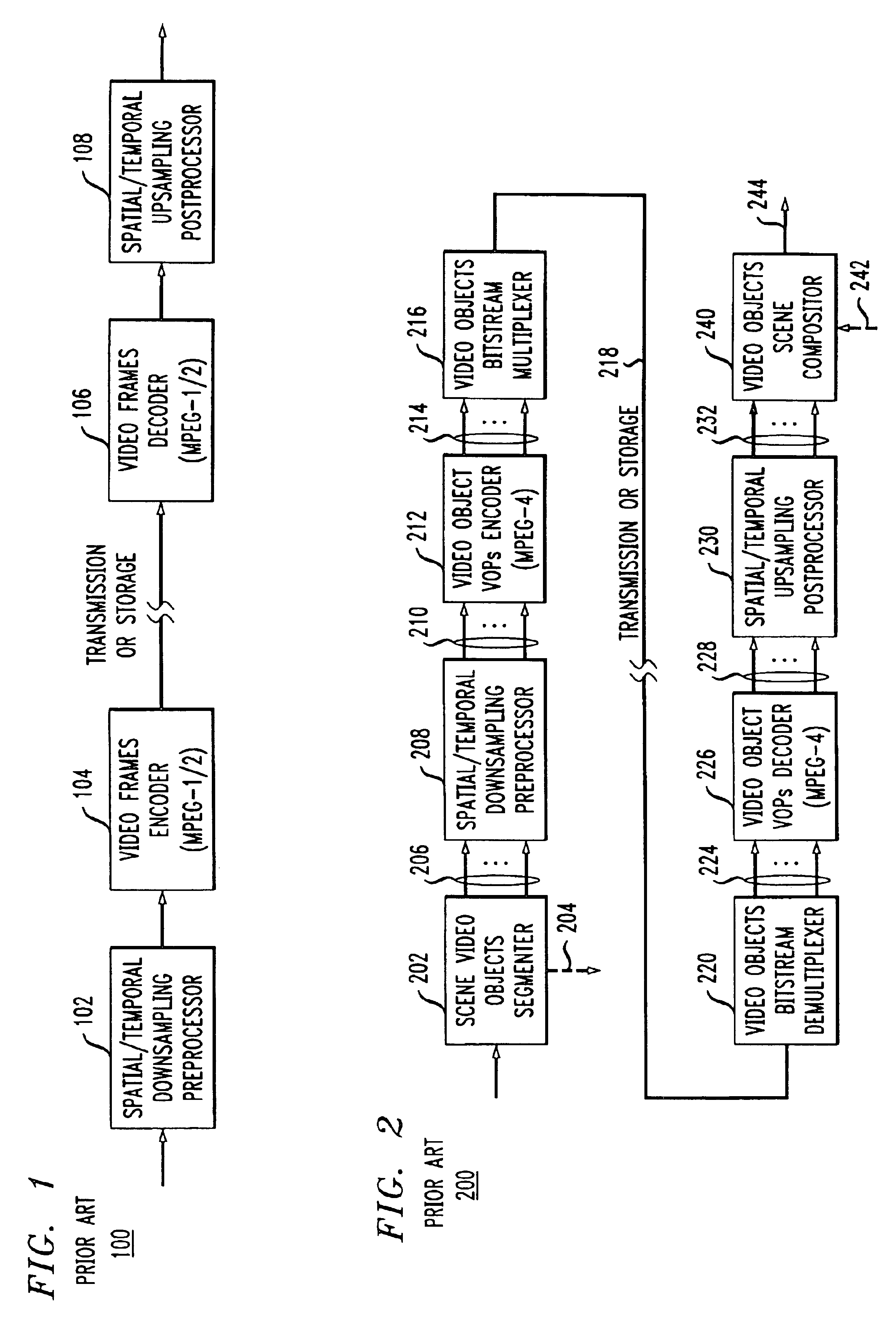Content adaptive video encoder
a video encoder and adaptive technology, applied in the field of video signal encoding, can solve the problems of difficult validation of such claims, low delay real-time encoding, and general purpose codecs that do not provide significant improvement in performance, etc., and achieve the effect of high efficiency
- Summary
- Abstract
- Description
- Claims
- Application Information
AI Technical Summary
Benefits of technology
Problems solved by technology
Method used
Image
Examples
first embodiment
[0042]The present invention may be understood with reference to FIGS. 3-16b that illustrate embodiments and aspects of the invention. FIG. 3 illustrates a system for providing video content encoding and decoding according to the invention. A block diagram of the system 300 illustrates a specialized codec for coding and decoding video portions (segments, subsegments or ROIs). The video portions may be part of a movie or any kind of video or multi-media content. The video content is input via line 301 to an extractor 302 for semantic and global statistics analysis based on predefined classifications. The extractor 302 also performs video segments extraction. The outcome of the classification and extraction process is a video stream divided into a number of portions on outputs 304, as well as specific descriptors output on line 306 defining high level semantics of each portion as well as identifiers and time code output on line 308 for each portion.
[0043]The terms “portion” or “fragmen...
second embodiment
[0102]FIGS. 16a and 16b provide an example of a method for encoding and decoding a bitstream according to an aspect of the invention. As shown in FIG. 16a, input video is first analyzed and then segments are extracted based on classification of portions of the video (1602). The descriptors describing the global classification of segments 1604 are forwarded as shown by connection indicator (A). Each video segment is processed in succession (1606). Each video segment is analyzed to identify subsegments and local regions of interest (ROIs) (1608). The descriptors describing the identification of subsegments and ROI (1610) are forwarded as shown by connection indicator (B). Input subsegments and ROIs are spatially and temporally downsampled (1612). The descriptors describing the subsampling (1614) are forwarded as shown by connection indicator (C).
[0103]Each segment is assigned one of the predefined models (1616). The descriptors describing the model assigned (1618) are forwarded as sho...
PUM
 Login to View More
Login to View More Abstract
Description
Claims
Application Information
 Login to View More
Login to View More - R&D
- Intellectual Property
- Life Sciences
- Materials
- Tech Scout
- Unparalleled Data Quality
- Higher Quality Content
- 60% Fewer Hallucinations
Browse by: Latest US Patents, China's latest patents, Technical Efficacy Thesaurus, Application Domain, Technology Topic, Popular Technical Reports.
© 2025 PatSnap. All rights reserved.Legal|Privacy policy|Modern Slavery Act Transparency Statement|Sitemap|About US| Contact US: help@patsnap.com



